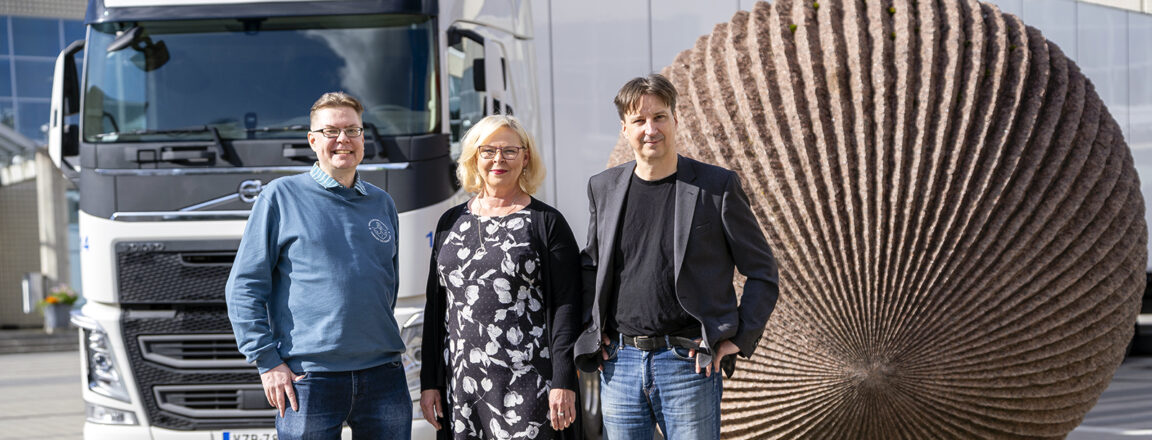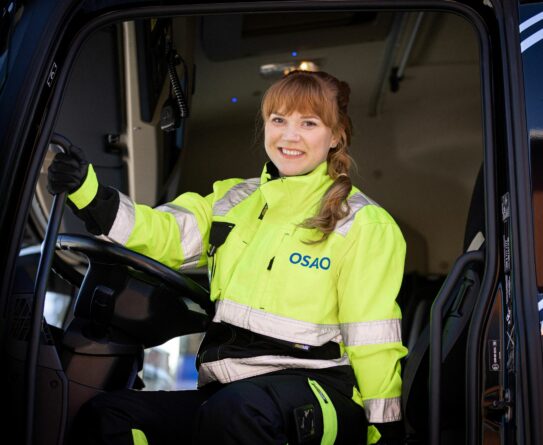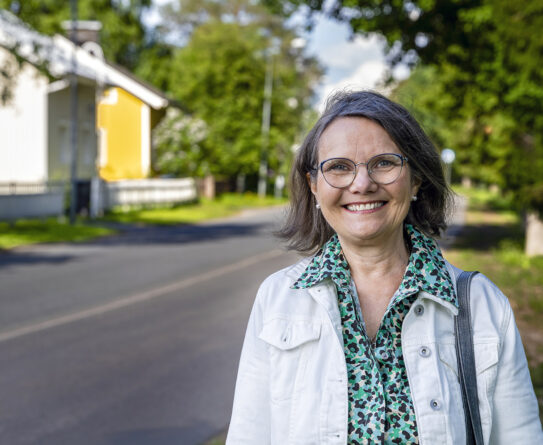
OSAO Invests in the First Hydrogen Truck in Finland
Elementti näyttää Voice Intuitiven kuuntelunapin ja translate-valikon
The collaboration coordinated by OSAO strengthens the development of hydrogen economy and the green transition in Northern Finland and across the country.
OSAO, the University of Oulu, and Oulu University of Applied Sciences are collaborating on a green transition project cluster that integrates research, development, and education. Project Manager Marjaana Komi from Educational Consortium OSAO says that the expertise from University of Oulu and Oulu University of Applied Sciences brings significant added value to the project.
“We are jointly developing digital and augmented reality learning environments for heavy equipment maintenance, internal logistics, and the forestry sector. We are also organizing various training programs, for example, for operators in the forestry and peat production sectors,” Komi explains.
One of the most significant investments in the project is Finland’s first hydrogen truck. Through this collaboration, OSAO receives new research data from the University of Oulu on the use of hydrogen trucks and their applications in various transportation tasks, Komi adds.
“We will use the research data from the University of Oulu, for example, in planning education and developing learning environments.”

In addition to the hydrogen truck investment, Komi brings up the internal logistics learning environment that is being developed in collaboration with Oulu University of Applied Sciences.
“New VR/XR technology and robotics solutions expand our current learning environments. With these new technology solutions, it is possible to simulate complex logistics tasks,” Komi explains.
Hydrogen Revolutionizes Transportation
The technology required for hydrogen vehicles already exists, and its implementation is only a matter of time, says Jouni Juntunen, Docent of Supply Chain Management and university researcher at University of Oulu’s Business School. Juntunen and his research team are involved in the work package that focuses on the investment and research of the hydrogen truck.
The hydrogen truck investment will be made during 2025. Juntunen and his research team are interested in the performance, cost-effectiveness, and consumption of the hydrogen truck in Northern Finland’s conditions. The research will provide valuable information on the skills and education needed in vocational training in the future.
“It is likely that hydrogen vehicles will operate with fuel cell engines. The technology for maintaining these vehicles will be quite like that of electric vehicles, but fuel cells will require new specialized expertise,” Juntunen explains.

Juntunen states that Northern Finland now has an opportunity to gain a competitive edge in the hydrogen race, and the increased use of hydrogen in transportation could happen even faster than anticipated.
“Hydrogen will be a cheaper fuel than gasoline or diesel: based solely on fuel costs, the fuel savings for a timber truck in heavy-duty use could be nearly 200,000 euros per year. We are in a completely new situation where predictions may change. We need to be part of the development if we want to maintain our competitiveness.”
Juntunen compares the possible rapid revolution of hydrogen to the arrival of smartphones.
“Nokia once declared that buttons wouldn’t disappear from phones for at least 20 years because no one wanted touchscreen phones. A few years later, smartphones hit the market. When a technical innovation comes along with economic and service-based incentives, changes can happen unbelievably quickly.”
Robotics Assisting Humans
OSAO, in collaboration with Oulu University of Applied Sciences, is developing both a virtual and physical maintenance and repair environment for alternative power sources for heavy equipment, as well as a robotics-focused internal logistics learning environment for OSAO’s logistics field.
The learning and demonstration environment for internal logistics will also serve as an innovation platform for companies, where new technologies can be developed and tested. In addition, the learning environment will offer training programs and workshops on sustainable logistics principles.
Project Coordinator Kalle Nuortimo from Oulu University of Applied Sciences says that the role of robotics in internal logistics will grow significantly in the future. Oulu University of Applied Sciences is acquiring a robot and robotic arm for research and educational use at OSAO’s logistics hall in Kempele.
“We are specifically researching how robots fit into warehouse logistics. As the use robotics increases in internal logistics, employees’ tasks will shift towards managing the implementation and use of robotics.”

Nuortimo says that the increase of robotics in internal logistics requires acquiring new skills and keeping up with development.
“The role of education will increase. We need to ensure that employees can manage the new technologies and more efficient practices.”
To strengthen the employees’ expertise, two new multidisciplinary training programs will be organized in the internal logistics sector during 2025-2026: Digitalized Sustainable Logistics and Alternative Power Sources.
At the Forefront of Green Transition
Project Manager Marjaana Komi says that investing in education is critically important for a green future.
“Graduates from vocational education must have the knowledge and skills to promote sustainable development in their work and master the latest technologies.”
For vocational education, green transition requires both the development of education and skills, as well as ongoing dialogue with businesses and workplaces, Komi says.
“Vocational education must not fall behind in technological development.”
Komi believes that the results of the project could have a significant impact on both OSAO and Northern Finland.
“Oulu has traditionally been profiled as an ICT city, but now we have the opportunity to emerge as a leader in the hydrogen economy and green transition.”
Information about the Project Cluster
The project cluster includes three projects – VISIOK, VISIOP and Uula.
The three-year project is funded by the Council of Oulu Region from the European Regional Development Fund (ERDF) and the Just Transition Fund (JTF), as well as the Centre for Economic Development, Transport, and the Environment (ELY Centre) from the JTF.
The project has been prepared as an Oulu Innovation Alliance collaboration. The City of Oulu and BusinessOulu are co-financing partners in the project.
The total budget for the project cluster is over 4 million euros.



